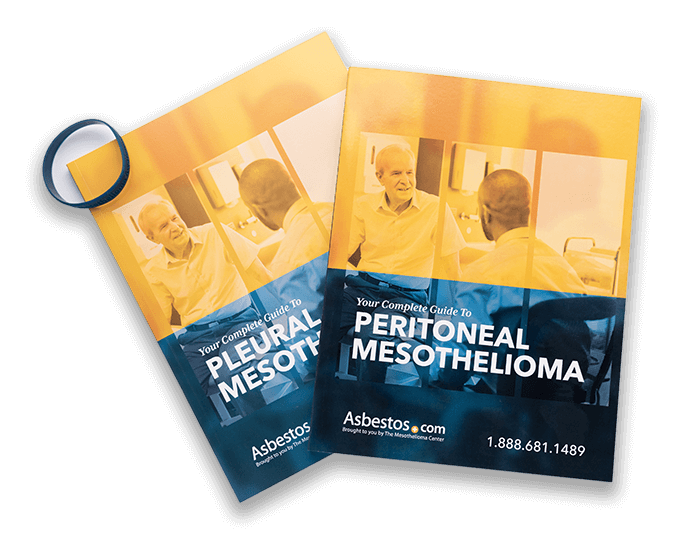The Rise & Fall (and Legacy) of Asbestos Comic Book Villains
Awareness & ResearchWritten by Matt Mauney | Edited By Walter Pacheco
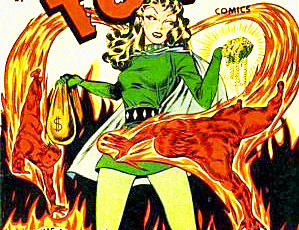
As a comic book fan and proud nerd, I’ve always believed the key to a great superhero is an even greater villain.
Without the Joker, Batman is simply a genius, billionaire playboy philanthropist. If it wasn’t for the Green Goblin, Spider-Man would merely be the world’s strongest and most unique newspaper photographer.
But a villain’s purpose is more than bringing justification to the heroes they antagonize. Their purpose often is a statement about society, as in the case of “Asbestos Lady” and “Asbestos Man” — two obscure Marvel Comics villains from the ’40s and ’60s.
Both were nemeses of the Human Torch, a superhero who controls fire. At the time, the dangers of asbestos exposure were well documented, but the mineral was still prevalent in products and the manufacturing and construction industries because of its affordability and durability.
The tone of asbestos in pop culture changed as the general public became more aware of its carcinogenic properties. Even its representation, in something as unrelated as the comic book industry, shows its evolution from a miracle material to a notorious toxin.
Asbestos remains the leading cause of mesothelioma, a rare and highly aggressive cancer diagnosed in an estimated 3,000 people annually in the U.S. The toxic mineral is also linked to other serious respiratory diseases such as lung cancer and asbestosis.
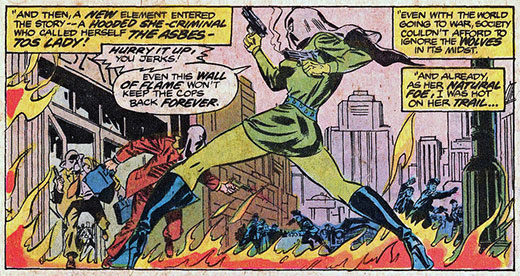
Asbestos Lady creates a wall of flame to deter the police.
ComicBook.com, an independently owned media company focused on pop and geek culture, recently ranked Asbestos Lady as one of the “5 Most Pointless Marvel Villains.” The ranking addresses some of the more “lackluster, vague villains” in Marvel comic books, claiming writers “got bored and just spit out random useless baddies.”
Unorthodox, yes, but the story and legacy of Asbestos Lady (and later Asbestos Man) is far from pointless.
The Rise and Fall of Asbestos Lady
Fictional character Victoria Murdock, aka Asbestos Lady, was a gifted scientist who utilized the versatile properties of asbestos to lead a life of crime.
Although she didn’t know it at the time, asbestos would become her greatest enemy.
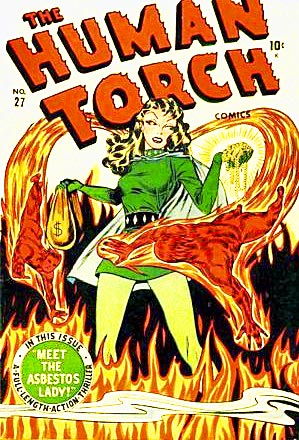
Marvel Comics cover features Asbestos Lady.
Murdock and her accomplices pulled off a string of bank robberies by setting fires to hold back police. To protect themselves from the flames, Murdock and crew wore clothing lined with asbestos, which at the time was a popular fireproofing material used in everything from roofing insulation to firefighter suits.
Taking the asbestos gimmick even further, she tried forcing a pair of leading asbestos scientists to join her gang. “There is still much I wish to learn about the criminal possibilities of asbestos,” Murdock is quoted in one of the comic books. The scientists refused, and she killed them.
Comic book heroes, the Human Torch and Toro (son of the asbestos scientists), became allies and natural adversaries of Asbestos Lady. It was fire versus asbestos.
To battle the heroes, Asbestos Lady armed herself with an asbestos-lined net, a flamethrower and guns loaded with asbestos bullets.
Asbestos Lady is eventually defeated and sent to prison, but her true justice isn’t revealed until years later. She succumbed to mesothelioma at 45, presumably from long-term exposure to asbestos.
Asbestos Lady & Lady Asbestos
Not much is known about what led to the creation of Asbestos Lady.
Anthony Rich, an industrial hygienist known as “Asbestos Hunter,” suggests an interesting comparison on his asbestos archive website Asbestorama.
Decades before Marvel introduced Asbestos Lady, asbestos manufacturing giant Turner & Newall Limited illustrated an ad with “Lady Asbestos,” an allegorical depiction of a Greek goddess-like figure holding a shield and protecting civilization from the elements.
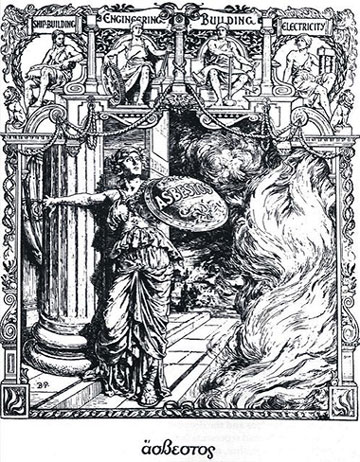
Lady Asbestos in ad for asbestos manufacturer Turner & Newall Limited.
The ads are just one example of early propaganda from asbestos manufacturers.
“Metaphorically, asbestos went from good to bad over the course of a few decades, as indicated by these two graphical representations,” Rich said of Lady Asbestos and Asbestos Lady.
Short-Lived Reign of Asbestos Man
Marvel’s second go at an asbestos villain came in a 1963 issue of “Strange Tales” with the introduction of Asbestos Man.
The first documented case of mesothelioma linked to asbestos exposure surfaced a year later, in 1964, but it wasn’t until the 1970s that scientific evidence surrounding the dangers of the mineral became publicly accepted.
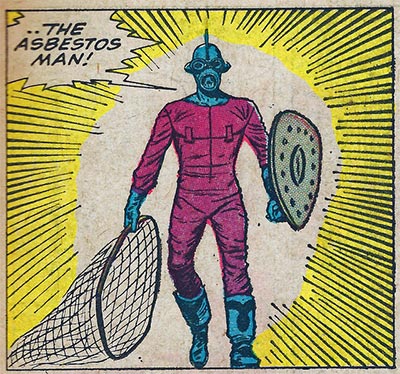
Marvel Comics’ Asbestos Man.
Before taking the alias of Asbestos Man, fictional character Orson Kasloff was the world’s foremost analytical chemist. Wanting to be treated like a king, he turned to a life of crime.
In an effort to impress the criminal underworld, he decided to defeat the Human Torch.
Kasloff assumed the identity of Asbestos Man, creating a suit of flame-resistant “super asbestos” and arming himself with an asbestos shield and asbestos-lined net that converted heat into explosive charges.
Asbestos Man eventually surrendered and wouldn’t make another appearance until 47 years later, when he is shown trying to rob a fast food restaurant while carrying an oxygen tank.
“Please ignore my oxygen tank,” he tells the cashier in the comic book, “I’m a cancer survivor.”
The cashier doesn’t fear him, but is frightened by his suit made of asbestos. When the heroes show up, even they refuse to touch the asbestos suit. A hazmat team later removes Asbestos Man from the restaurant. That was the villain’s final appearance.
While their storylines were short-lived, compared to more notable Marvel villains, Asbestos Lady’s and Asbestos Man’s legacy is far more significant than the legacies of better known comic book villains.
At a time when asbestos was still being used in products like cigarettes and novelty Christmas snow, comic book criminals used the mineral as a weapon. In the end, both asbestos-themed villains were defeated, not by the superheroes they faced, but by their weapon of choice.
While we may never see Asbestos Lady or Asbestos Man featured as on-screen villains in a Hollywood blockbuster, their legacies are far from “pointless.”
They’re educational.

